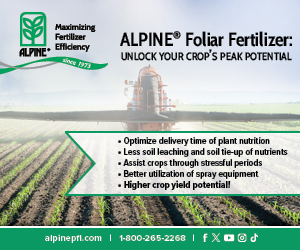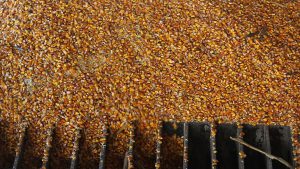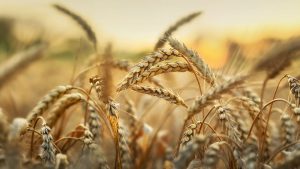Targeted sales
MARKETING DON INFECTED CORN

MY FIRST HARVEST in the commercial grain elevator business was 1992. For the farmers who are too young to remember it, 1992 was an extremely cool summer and much of Ontario’s corn crop simply failed to reach maturity before it was killed by frost. Harvest 1992 was full of anxiety over what could be done with corn that often didn’t make grade 5 for test weight. Who might buy it? What could it be used for? And how do you dry it without carmelizing the grain? However, by the spring of 1993, the collective ingenuity of farmers and agri-business had developed solutions to most of the problems, and whatever corn hadn’t been written off by crop insurance had all been moved through the pipeline before the next year’s crop reached harvest. That collective ingenuity is at work again as Ontario agriculture sorts out how to handle our ear mould ravaged corn crop.
Before we take the comparison too far, it’s important to point out that there is a critical difference between immature corn and product which has been infected by Gibberella mould. Immature corn has low fermentable starch levels, and lacks kernel durability, Gibberella infected corn contains deoxynivalenol (DON), which at high enough levels is harmful to any animal that might eat it.
HIGH DON LEVELS
The overwhelming majority of Ontario’s 2018 corn crop was not negatively impacted by vomitoxin to the point where it will be difficult to use. Prior to harvest, the Ontario Ministry of Agriculture, Food and Rural Affairs (OMAFRA), Grain Farmers of Ontario, and the Ontario Agri Business Association (OABA) conducted an ear mould survey and estimated that 25% of Ontario’s corn crop samples had vomitoxin levels more than five parts per million (ppm).
To put that degree of infection into perspective, it’s about four times the portion of the corn crop which was over five ppm in 2017 (which was six per cent of the total supply), and about three times the volume of greater than five ppm corn which we saw during our previous Gibberella outbreak in 2016 (when eight per cent of the crop reached that five ppm vomitoxin infection threshold). There is no historical comparison either in terms of the magnitude of the damaged crop, or the high DON measurements seen in some samples which frequently exceeded 20 ppm.
By early November we had already seen some end users re-visit their maximum allowable vomitoxin levels searching for the balance between maintaining finished product quality and being able to source an adequate supply of corn to keep their facilities running. We saw a couple of feed mills adjust their maximum DON limit up to four ppm or five ppm. That does not mean that they are producing a less safe finished feed product, but rather that they made decisions to add vomitoxin binding feed additives, or adjusted their formula to limit the total amount of corn or corn by-products being used in certain rations in order to maintain the quality of finished feed.
The presence of vomitoxin in corn does not significantly impact the fermentation of that corn’s starch into alcohol (or ethanol), but since the DON primarily resides on the outside of the kernel, its concentration is substantially higher in the dried distiller’s grains (DDGs) than it was on the inbound corn feedstock. At least in theory, there’s no reason that high vomitoxin corn couldn’t be used to manufacture ethanol; except that about one third of an ethanol plant’s revenue is generated from co-product sales. So, the biggest challenge for finding a way to use high DON corn in ethanol production is either pricing the corn appropriately to off-set the decline in co-product revenue, or to find innovative ways to use unusually high DON DDG’s. Developments on both of those fronts will continue to evolve as the crop year unfolds.
It’s not uncommon for international corn export vessels to be sold with vomitoxin specs of “maximum five ppm” and occasionally as high as “maximum eight ppm”. The higher the vomitoxin specification, the lower the price, and there is certainly a point where DON levels would be too high to find buyer interest.
MARKET OPTIONS
Part of the solution to marketing Ontario’s highly variable 2018 corn crop is going to come from exporting it to other parts of the world where specific end users have vomitoxin specs which fall in line with the crop Ontario has to market. Prior to the Great Lakes shipping lanes closing for the winter season, this province saw significant movement of “medium DON” corn into international markets, and we fully expect to see that flow resume, and potentially increase, when marine navigation resumes in the spring.
The key marketing difference in a year like this is the quality determinant of DON levels. This is controlling which corn can move into each specific end use market. The crop will move by quality specifications rather than the friction of distance, and prices will adjust in order to pull the required quality stream to each end user.
If #2 CE Yellow Corn is basically a uniform product, it simply moves the shortest distance or to the highest price to market. This year’s corn market will organize in quality layers (less than two ppm, less than five ppm, less than eight ppm, etc.), with escalating price levels for the higher quality layers in the market.
As if marketing agricultural crops wasn’t already challenging enough, in order to optimize the sales potential of this year’s corn crop, farmers are going to need to have tested their farm stored inventory and focus their marketing attention on the quality bracket where their corn fits. Trying to market corn into destinations which are above the quality bracket of your corn will lead to rejections, discounts, and dead freight costs. Selling into a market which is below your corn’s true quality potential results in lower prices, and reduced farm income. There are significant financial implications to either aiming too high or too low on quality-specific sales targets.
The most empowering knowledge that a corn producer can have through the winter of 2019 is a very specific understanding of DON levels in all of their stored inventory. Being able to drill that information down to a farm by farm, field by field, and bin by bin level of detail will provide farmers with the information to make the most appropriate targeted sales, and will give end users the knowledge to utilize the 2018 corn crop effectively.
Stephen Kell is the business manager — branch grain for Parrish & Heimbecker. He has more than 25 years of experience in the Ontario grain industry. •





















